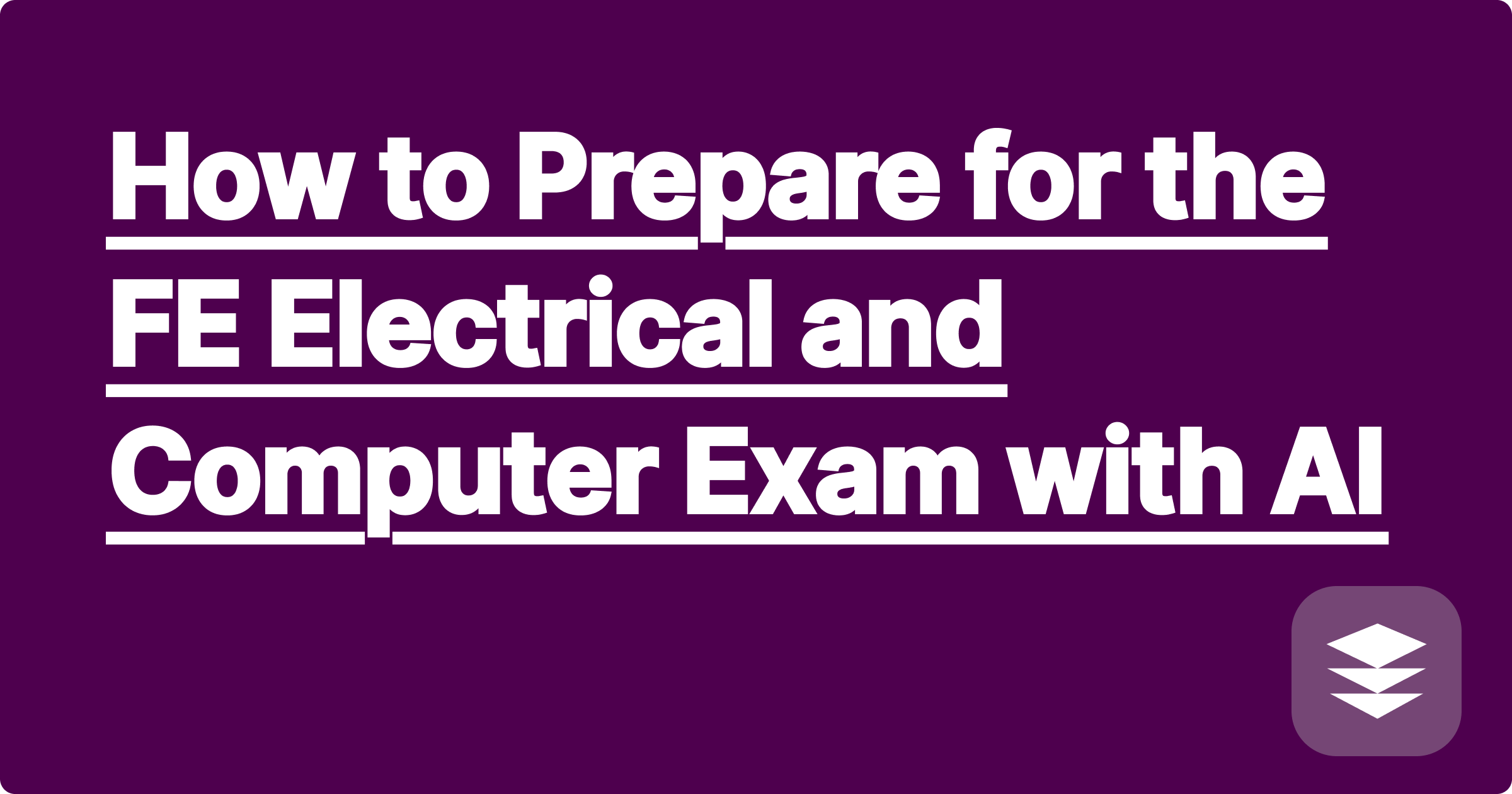
The Fundamentals of Engineering (FE) exam is the first major step toward becoming a licensed Professional Engineer. The FE Electrical and Computer exam is a six-hour beast, covering the breadth of your entire undergraduate curriculum, from basic circuit analysis to advanced digital systems. The sheer volume of topics is intimidating, and the official NCEES FE Reference Handbook, while essential, is over 500 pages long.
How do you even begin to prepare? The key is not to re-learn everything, but to conduct a highly efficient, targeted review. You need a way to condense your years of notes into a high-yield study guide and then practice applying that knowledge to exam-style problems.
This is where a smart ai for fe exam prep strategy can make all the difference. By using a tool like GPAI to organize your knowledge and generate practice questions, you can create a personalized and highly effective study plan.
The FE exam is different from your university finals.
Your goal is to create a study system that prioritizes rapid recall and broad topic coverage.
This is the most powerful first step. Instead of relying on a generic review book, build a guide from the notes you already have from your own courses.
This process re-contextualizes your university notes into a framework that is 100% focused on passing the exam.
Once your personalized fe electrical exam prep guide is built, it becomes the source material for a limitless quiz bank.
Your Prompt: "Using the information in my 'Digital Systems' cheatsheet, generate 10 multiple-choice questions in the style of the FE exam. Include questions on Boolean algebra, state machines, and number systems."
GPAI Solver can then generate exam-style questions and provide detailed explanations for the correct answers. This is far more effective than just re-doing old homework problems because it forces you to apply your knowledge in the multiple-choice format of the actual exam.
During the exam, you'll have access to the digital handbook. You can use AI to practice using it effectively.
Your Prompt: "I'm solving a problem on 3-phase power. Which section of the NCEES FE Reference Handbook contains the relevant formulas, and what are the key equations I should look for?"
The AI can guide you to the right section (e.g., "Power Systems"), helping you become familiar with the handbook's layout before the pressure of exam day.
The FE exam is a test of your engineering knowledge and your ability to manage a vast amount of information efficiently. A study plan based on AI-powered organization and practice is the smartest way to prepare. It allows you to focus your limited study time on the topics you're weakest in and practice in a format that mirrors the real exam.
[Ready to start your FE exam preparation? Use GPAI Cheatsheet and Solver to build your personalized study guide and generate endless practice problems. Sign up for 100 free credits and take the first step toward becoming a Professional Engineer.]
Circuit Analysis Made Simple: An AI Assistant for Nodal and Mesh Analysis
Understanding Electromagnetics: How AI Can Visualize Fields and Waves
Digital Logic Design: From Truth Tables to Karnaugh Maps with AI
Signals and Systems: How AI Can Help You with Fourier and Laplace Transforms
Your Guide to Semiconductor Physics: How AI Simplifies Band Diagrams
How to Write Verilog or VHDL Code Faster with an AI Assistant
Mastering Microelectronics: An AI Tool for Amplifier and Filter Design
The ECE Student's Ultimate Cheatsheet: Combining Circuits, Signals, and Code
Can AI Help Me with My PSpice / LTspice Simulation?
How to Prepare for the FE Electrical and Computer Exam with AI